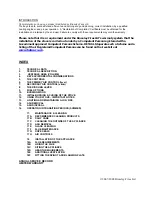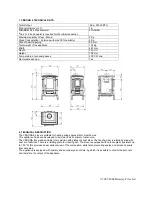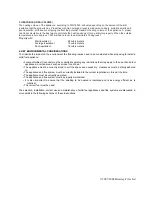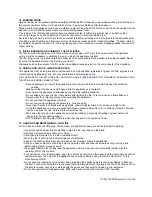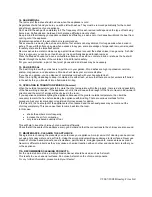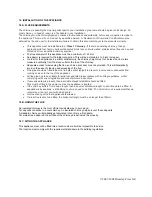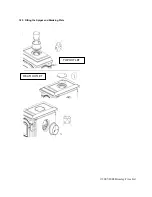
© 2007-2008 Broseley Fires Ltd
17B. DAILY CARE
To keep the surfaces of your appliance bright and clean, a daily wipe over with a lint free cloth, soaked in hot water
and a little soap is all that is needed.
To buff the cleaned surfaces, a soft, dry, lint free cloth should be used.
In order to keep your appliance in tip top condition, it is necessary to wipe up any spills or condensation streaks as
soon as is safe to do so. (i.e. when the unit is cold)
This will prevent the mark burning onto the appliance and becoming a much tougher stain to remove at a later date,
or causing a permanent mark. Try not to use excessive amounts of water when cleaning the appliance.
17C. CLEANING THE OUTSIDE OF THE APPLIANCE:
The stove and doors of the appliance are solid cast iron and painted with a heat proof paint. These can also be
cleaned with a lint free damp cloth, then wiped over with a dry cloth. Should re-painting be necessarry, contact your
local supplier for a can of paint.
The appliance has one main surface finish; This should be cleaned when the appliance is cool.
The cooking surface (if chosen option) is cast iron and can be cleaned with a lint free damp cloth. Do not leave this
surface wet as it will go rusty.
17D. ASH REMOVAL:
The appliance need to have the ash removed from the ash pan and fire chamber on a regular basis. You can
remove the ash from the fire chamber and ash pan by using a suitable tool (i.e a brush or specialised ash vacuum)
You need to insure all air vents are clear of ash, there is no ash build up on baffles or firebricks and that excess
build up of ash is removed from all parts of the stove. This needs to be done as and when necessary to maintain
free movement of air inside the stove. The efficient operation of your appliance is dependant on its correct operation
and maintenence. Leaving soot to accumilate inside the areas mentioned above, will drastically reduce the output of
the appliance and prevent it from doing what it is designed to.
17E. GLASS CLEANING:
There are various glass cleaners you can buy at stove shops that are specially designed to remove hydrocarbon
(soot) and fly ash (mineral) deposits from the glass. Follow the manufacturers instructions. Typically, just spray a
small amount of cleaner on the glass and use a paper towel or rag to wipe it clean.
If you only burn logs in your appliance, then you can dip a damp cloth in the ash and use this to scrub the glass
clean.
17F. FLUE MAINTENANCE:
If your appliance is installed into an existing chimney, you will need to clean the chimney as well as the flue pipe at
least twice a year. To do this you will need the appropriate sized chimney brush and rods. Call a certified chimney
sweep (National Association of Chimney Sweeps) or other qualified professional to clean the flue system. These
professionals have the equipment and the experience to do a thorough job. The sweep will advise you as to the
intervals that you should have your flue swept. We would recommend that you have it swept at least twice a year,
but you may need to sweep it more.
Get them to inspect the condition of all the associated chimney items at the same time.
Be sure to check the pipe at least once every six months to determine if it has corroded.
17G. ROPE SEALS:
For the appliance to operate correctly, it is important that all the seals; where fitted; are in good condition and are
sealing correctly. They should be replaced if they are showing excessive signs of fraying and are not making a good
seal. They are glued into position using a high temperature, flexible, silicone sealant
17H. AIR CONTROLS:
Ensure that all the air controls operate smoothly and are free from ash or other foreign bodies.


